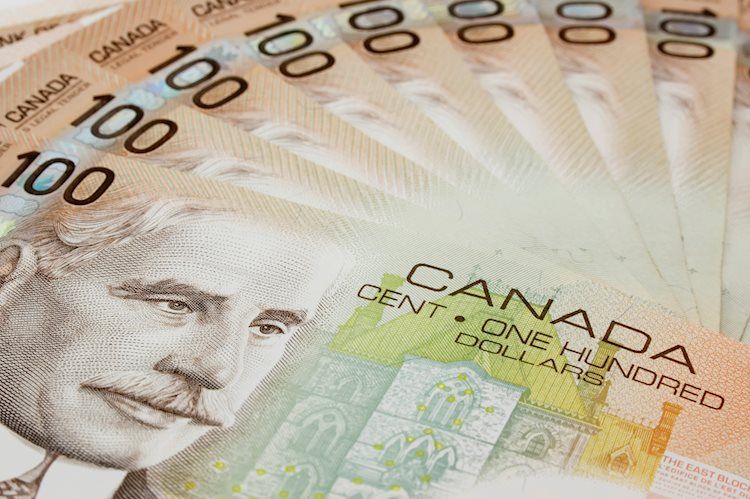- Canadian Dollar flows are resurfacing after Thursday’s nosedive, propped up by a reinvigorated oil bid.
- Canada economic data remains thin until Tuesday’s CPI print.
- US Dollar giving back yesterday’s gains after consumer sentiment miss.
The Canadian Dollar (CAD) caught a mild recovery on Friday, paring back Thursday’s dip after broad-market risk sentiment soured. Investors dog-piled into the US Dollar (USD) after a US Consumer Price Index (CPI) inflation beat reignited fears of Federal Reserve (Fed) interest rates remaining higher for even longer than markets are currently hoping for.
Canada’s Crude Oil-linked Loonie is getting pushed higher after oil markets catch a firm bid on Friday, and Canadian Dollar traders will be looking to close out Friday’s market session in the green after setting a new low for the week yesterday.
Daily Digest Market Movers: Canadian Dollar in limited recovery mode as Crude Oil bounces
- Canadian Dollar rebounding on Friday, walking back Thursday’s losses; however downside risk remains as markets favor Greenback.
- Investor sentiment is recovering after a sharp downturn yesterday.
- Crude Oil markets are back on the rise as Middle east geopolitical tensions take a bite.
- The US tightened loopholes on their sanctions against Russian oil, sending barrel prices higher.
- Crude Oil traders are worried that the Gaza Strip conflict escalation could spill over into more US fossil fuel sanctions on Iran.
- CAD traders will be looking ahead to Tuesday’s CPI reading.
- US Michigan Consumer Sentiment missed the mark on Friday, helping to edge the USD lower.
- BoC’s Macklem: Not really seeing downward momentum in underlying inflation
- What we’ll be watching: USD, CAD factors – NBF
Technical Analysis: Canadian Dollar looking to regain ground, USD/CAD cycling near 1.3660
After knocking into 1.3700 and marking in a new low for the week, the USD/CAD is easing back into familiar territory, and intraday action sees the pair trading closely with the 200-hour Simple Moving Average (SMA), with intraday technical support coming from the 50-hour SMA near 1.3640.
On the daily candlesticks, the USD/CAD is poised for a bearish extension back into the 50-day SMA near 1.3550, with long-term support coming from the 200-day SMA just north of 1.3450.
Despite recent strength on the part of the Canadian Dollar, the USD/CAD remains a well-bid pair, still up over 2% from September’s swing low into 1.3380.
Canadian Dollar FAQs
The key factors driving the Canadian Dollar (CAD) are the level of interest rates set by the Bank of Canada (BoC), the price of Oil, Canada’s largest export, the health of its economy, inflation and the Trade Balance, which is the difference between the value of Canada’s exports versus its imports. Other factors include market sentiment – whether investors are taking on more risky assets (risk-on) or seeking safe-havens (risk-off) – with risk-on being CAD-positive. As its largest trading partner, the health of the US economy is also a key factor influencing the Canadian Dollar.
The Bank of Canada (BoC) has a significant influence on the Canadian Dollar by setting the level of interest rates that banks can lend to one another. This influences the level of interest rates for everyone. The main goal of the BoC is to maintain inflation at 1-3% by adjusting interest rates up or down. Relatively higher interest rates tend to be positive for the CAD. The Bank of Canada can also use quantitative easing and tightening to influence credit conditions, with the former CAD-negative and the latter CAD-positive.
The price of Oil is a key factor impacting the value of the Canadian Dollar. Petroleum is Canada’s biggest export, so Oil price tends to have an immediate impact on the CAD value. Generally, if Oil price rises CAD also goes up, as aggregate demand for the currency increases. The opposite is the case if the price of Oil falls. Higher Oil prices also tend to result in a greater likelihood of a positive Trade Balance, which is also supportive of the CAD.
While inflation had always traditionally been thought of as a negative factor for a currency since it lowers the value of money, the opposite has actually been the case in modern times with the relaxation of cross-border capital controls. Higher inflation tends to lead central banks to put up interest rates which attracts more capital inflows from global investors seeking a lucrative place to keep their money. This increases demand for the local currency, which in Canada’s case is the Canadian Dollar.
Macroeconomic data releases gauge the health of the economy and can have an impact on the Canadian Dollar. Indicators such as GDP, Manufacturing and Services PMIs, employment, and consumer sentiment surveys can all influence the direction of the CAD. A strong economy is good for the Canadian Dollar. Not only does it attract more foreign investment but it may encourage the Bank of Canada to put up interest rates, leading to a stronger currency. If economic data is weak, however, the CAD is likely to fall.
